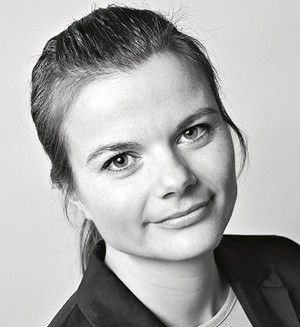We share more than ever before, with the entire world. Therefore, we need to rethink publication ethics.

Photo: Einar Nilsen
«Why can one print a picture of a dead child in Syria without any reactions, but not show one of the largest massacres in Europe since World War II?» Aftenposten columnist Torstein Hvattum posed this troubling question after a Swedish photographer received an award for a series of images from Utøya island (1). The media bring pictures and stories about the world’s cruelty on a daily basis. Often, this involves people who are far away and in vulnerable situations – war, violence, famine, illness, death. Pictures and stories that appeal to our emotions are potent instruments that need to be applied with caution (2). The desire to document may come into conflict with the integrity and privacy of individuals. So where should we draw the line? There is no easy answer to this, but I believe that Hvattum is correct in saying that «the distance to those affected makes it easier to lower our ethical defences, consciously or unconsciously» (1).
No more than a couple of decades back, this distance had a completely different meaning. At the time when we only had paper-based newspapers, distribution was restricted. With the Internet and social media, there is only a short distance between the readers and those described or depicted. Articles published in the Norwegian media are only a keystroke away for people who live in India or Syria. The same applies to articles in the Journal of the Norwegian Medical Association. All our articles are openly available and can be read and shared by everybody. Many of them have been translated into English (3). Free accessibility requires vigilance on the part of authors and editors, not least with regard to presentation of case stories and pictures (4, 5).
The Journal of the Norwegian Medical Association sets strict requirements for anonymisation of patients and consent to publication (4 – 7). As a main rule, consent must be obtained if anybody, including the patient him-/herself may recognise the person being described. There are exceptions (4), but these strict requirements apply to patients in Norway as well as distant countries. It makes no difference whether the patient hails from Hamar or Kathmandu.
The consent must be informed and voluntary, and must be provided on a specified form. The form is available in Norwegian and English, and can be downloaded from the website of the Journal of the Norwegian Medical Association (6). In signing, the patient agrees that text and pictures can be published in the printed issue and on the website – which is open to everybody – and that he/she is aware of the implications. Moreover, the patient must have seen or have been provided with an opportunity to see the pictures and the text, or have had it explained what the text contains. The author is also responsible for providing the patient with an opportunity to see the finished article before it is published (6).
Making sure that the consent is informed and voluntary can be a demanding exercise, especially when the patient is in other parts of the world or when language and cultural barriers are involved (8). Exactly for this reason, special vigilance is called for. It is possible to write about a patient in India, but it will require preparation and care. For example, what should be done if this person is illiterate? For us as editors, the main concern is to make sure that the consent is voluntary, and that the content of the consent form has been communicated to the patient and that he or she has understood it. Has the patient understood that if he/she does not consent, the doctor will still provide treatment to him/her? Has he/she understood the implications of publication on the Internet?
The Journal of the Norwegian Medical Association has two columns specially devoted to international health issues: «Global health» and «International Medicine». «Global health» is a news column presenting recent studies on global health issues. The column «International medicine» brings travelogues and reflective opinions on medical issues in an international perspective (9). These columns are important. As doctors in a Norwegian setting we need to read about realities in other parts of the world. Unfortunately, we occasionally need to cut descriptions of patients from such articles, since no consent has been obtained. We would like to avoid this.
The way in which we publish has changed significantly in just a few years. This has given rise to a heightened awareness of protection of privacy, but we are still short of the goal. Francis Collins, Director of the National Institutes of Health, recently stated that: «Frankly the science has moved faster than the consent process, and maybe it is time to catch up» (10). The same applies to publishing. For – who would have thought that we would come to share so much?